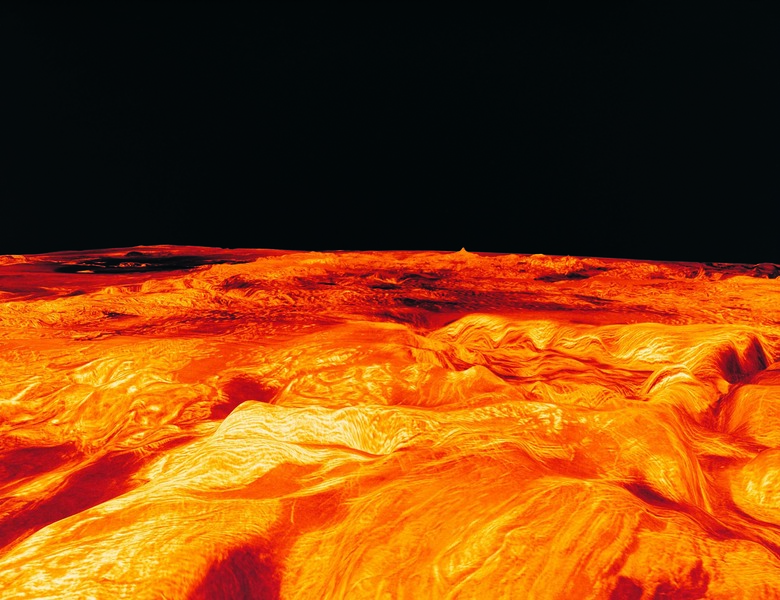How Far Is Earth From Venus?
Even though Venus is the closest planet to Earth, it is often eclipsed in popular culture by another neighboring planet, Mars. Though Mars has similar surface conditions to Earth, Venus appears more like Earth's twin — similar in size, density and mass. Venus may be Earth's celestial neighbor, but it still takes a spacecraft over a year to reach the planet, whose orbit takes it closer to the sun.
Distance
Distance
When their orbits bring them opposite each other, Earth is about 41.4 million kilometers (25.7 million miles) from Venus. At this distance Venus is more than 100 times as far from Earth as the moon. For a more Earthly visualization, you could fly around the Earth over a thousand times before you would travel an equivalent distance. But the planets' orbits do not keep them equidistant year-round — they can be as much as 261 million kilometers (162,178,000 miles) apart.
Venus
Venus
A year on Venus is just 225 Earth days, but a day is a whopping 117 Earth days long instead of just 24 hours. This is because Venus rotates on its axis extremely slowly — it actually rotates backward compared to Earth. Because Venus is so close its outer neighbor, when observed from Earth it is the brightest planet. Conditions on the planet's surface also tend to make it appear bright. Venus is covered with more than a thousand large volcanoes, more than 20 kilometers (12 miles) wide. These volcanoes, along with the large amount of carbon dioxide in the atmosphere, make Venus extremely hot — up to 471 degrees Celsius (880 degrees Fahrenheit).
Similarities
Similarities
Venus is close to Earth in many ways, not just distance. Gravity is roughly equivalent on the planets as the surface gravity on Venus is 8.87 meters per second squared (29.1 feet per second squared), and surface gravity on Earth is 9.81 meters per second squared (32.04 feet per second squared). Earth is only slightly bigger than Venus in terms of both radius and circumference. Earth's radius less than 400 kilometers larger than Venus's, and Earth's circumference is only 2,000 kilometers larger as well. Venus's mass is 0.815 that of Earth.
Missions
Missions
Japan launched the most recent mission to Venus, Akatsuki, in 2010. It was supposed to orbit the planet for two years to collect data, but it missed its entrance into orbit — Japan plans to retry in 2015 when the satellite will be close to Venus again. The European Space Agency launched Venus Express in 2005, and it has been orbiting Venus since 2006. One of the most successful missions was the 1989 Magellan mission, as it mapped more than 98 percent of the planet.
References
- National Park Service: How Far Apart are the Planets?
- NASA: Earth's Moon: Facts and Figures
- NASA: Venus: Facts and Figures
- NASA: Earth: Facts and Figures
- NASA: Venus: Read More
- Science Now: Japan's Akatsuki Mission Misses Venus
- European Space Agency: Venus Express Mission Facts
- The Planetary Society: Missions to Venus and Mars
- Universe Today: Venus Distance from Earth
Cite This Article
MLA
MacGregor, Kelly. "How Far Is Earth From Venus?" sciencing.com, https://www.sciencing.com/far-earth-venus-4960/. 24 April 2017.
APA
MacGregor, Kelly. (2017, April 24). How Far Is Earth From Venus?. sciencing.com. Retrieved from https://www.sciencing.com/far-earth-venus-4960/
Chicago
MacGregor, Kelly. How Far Is Earth From Venus? last modified March 24, 2022. https://www.sciencing.com/far-earth-venus-4960/
